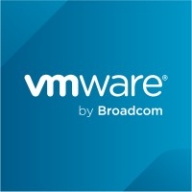

CloudBolt and VMWare Tanzu CloudHealth are competitive products in the cloud management space. CloudBolt leads in pricing with cost-effective solutions and strong customer support, while VMWare Tanzu CloudHealth is favored for its superior features and comprehensive capabilities.
Features: CloudBolt provides extensive automation capabilities, integration with diverse toolsets, and flexible deployment environments. VMWare Tanzu CloudHealth excels in in-depth financial management, advanced optimization tools for cloud resources, and detailed visibility into resource usage.
Room for Improvement: CloudBolt could enhance its feature set for resource optimization, offer more comprehensive visibility tools, and provide advanced financial management capabilities. VMWare Tanzu CloudHealth could improve its deployment simplicity, broaden its automation capabilities, and enhance integration flexibility with diverse toolsets.
Ease of Deployment and Customer Service: CloudBolt is known for its straightforward deployment process and efficient customer service. VMWare Tanzu CloudHealth requires a more complex setup that may need specialized knowledge, though it provides excellent ongoing support.
Pricing and ROI: CloudBolt offers competitive setup costs with a swift ROI through its cost-effective management solutions. VMWare Tanzu CloudHealth involves a higher initial investment but promises substantial ROI through detailed resource management and optimization features.
| Product | Market Share (%) |
|---|---|
| CloudBolt | 2.5% |
| VMWare Tanzu CloudHealth | 1.9% |
| Other | 95.6% |


| Company Size | Count |
|---|---|
| Small Business | 3 |
| Midsize Enterprise | 1 |
| Large Enterprise | 6 |
| Company Size | Count |
|---|---|
| Small Business | 4 |
| Midsize Enterprise | 2 |
| Large Enterprise | 4 |
CloudBolt supports a variety of cloud technologies, from on-premises virtualization and private cloud to a wide range public and hybrid cloud configurations.
No need to rip-and-replace. CloudBolt provides easy import, syncing, and management of legacy deployments even as it helps you build out new cloud environments.
CloudBolt lets administrators create and maintain configuration standards while developing a reusable library of service and application templates.
VMware Tanzu CloudHealth, formerly known as VMware Aria Cost Powered by CloudHealth, is a specialized cloud management platform tailored for Multi-Cloud Cost Optimization. It offers comprehensive visibility into cloud spending across various providers, enabling users to identify areas for optimization and make informed resource allocation decisions. With features like reserved instance management, resource rightsizing, and automated cost governance policies, it facilitates financial management for optimal cost efficiency. Beyond cost optimization, Tanzu CloudHealth enhances cloud operations through workload optimization and governance automation, catering to multi-cloud environments encompassing public, private, and hybrid clouds. Its primary focus remains on enabling organizations to effectively manage and reduce cloud expenditures while supporting operations across diverse cloud platforms.
We monitor all Cloud Management reviews to prevent fraudulent reviews and keep review quality high. We do not post reviews by company employees or direct competitors. We validate each review for authenticity via cross-reference with LinkedIn, and personal follow-up with the reviewer when necessary.